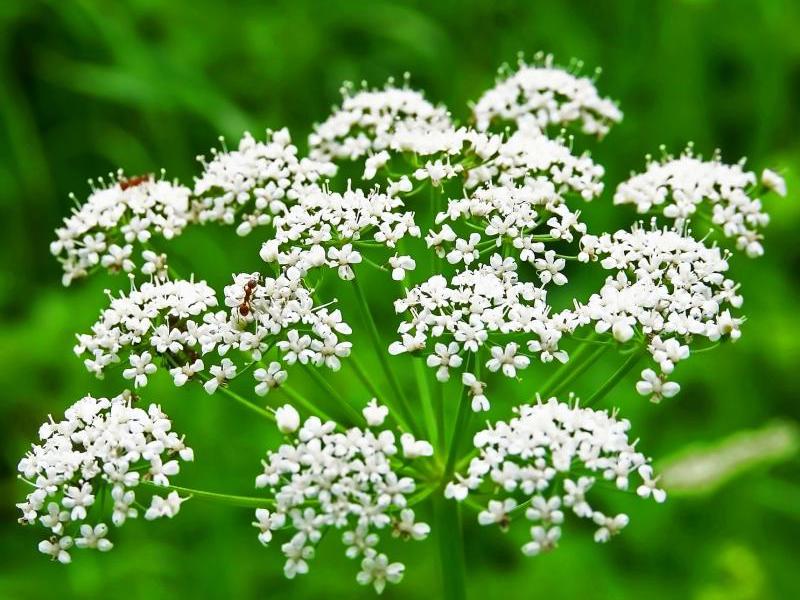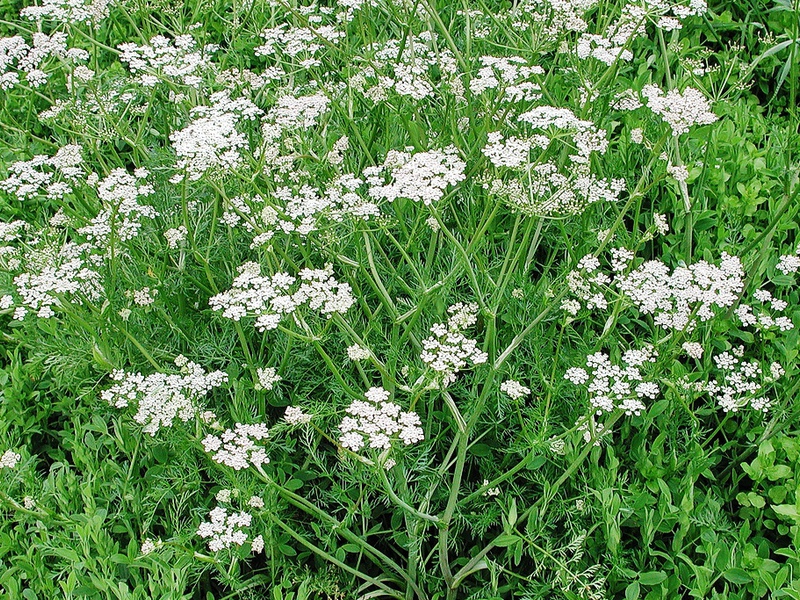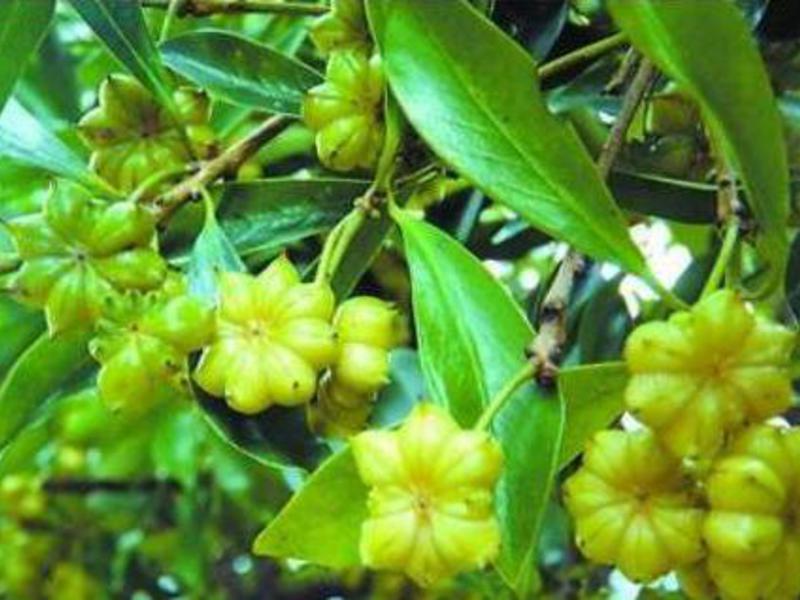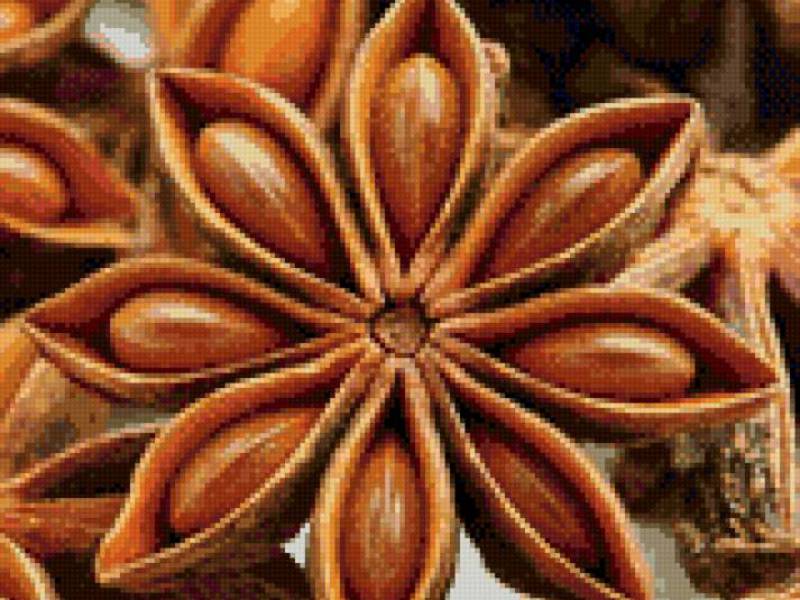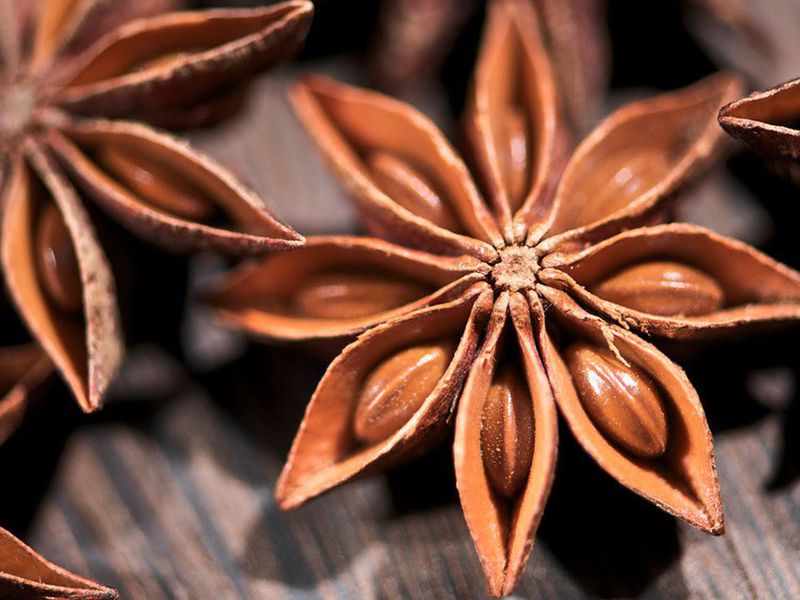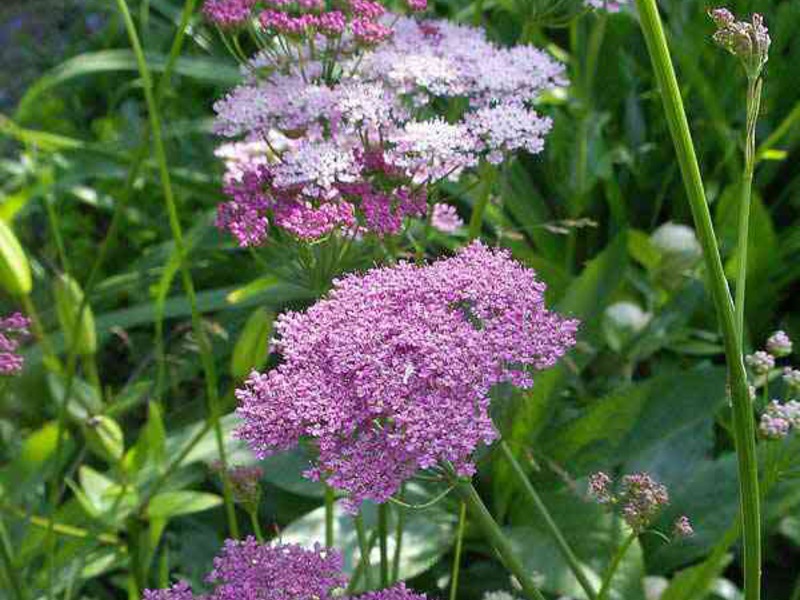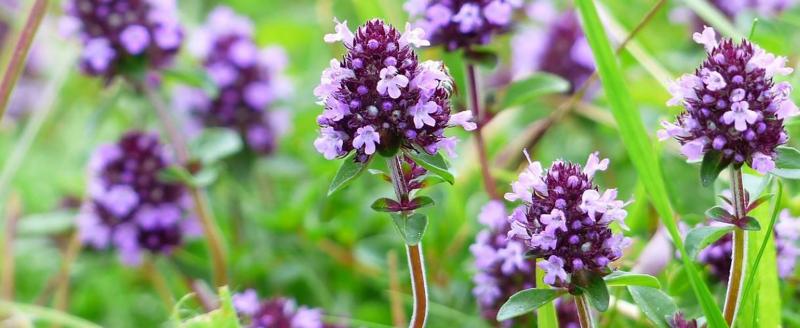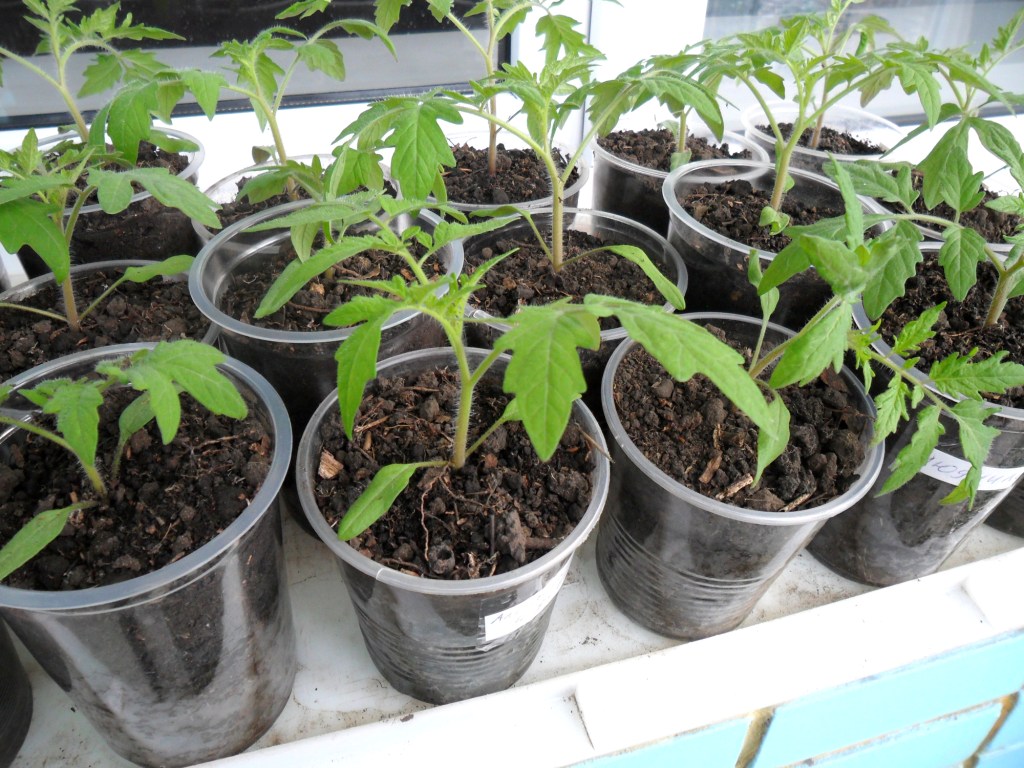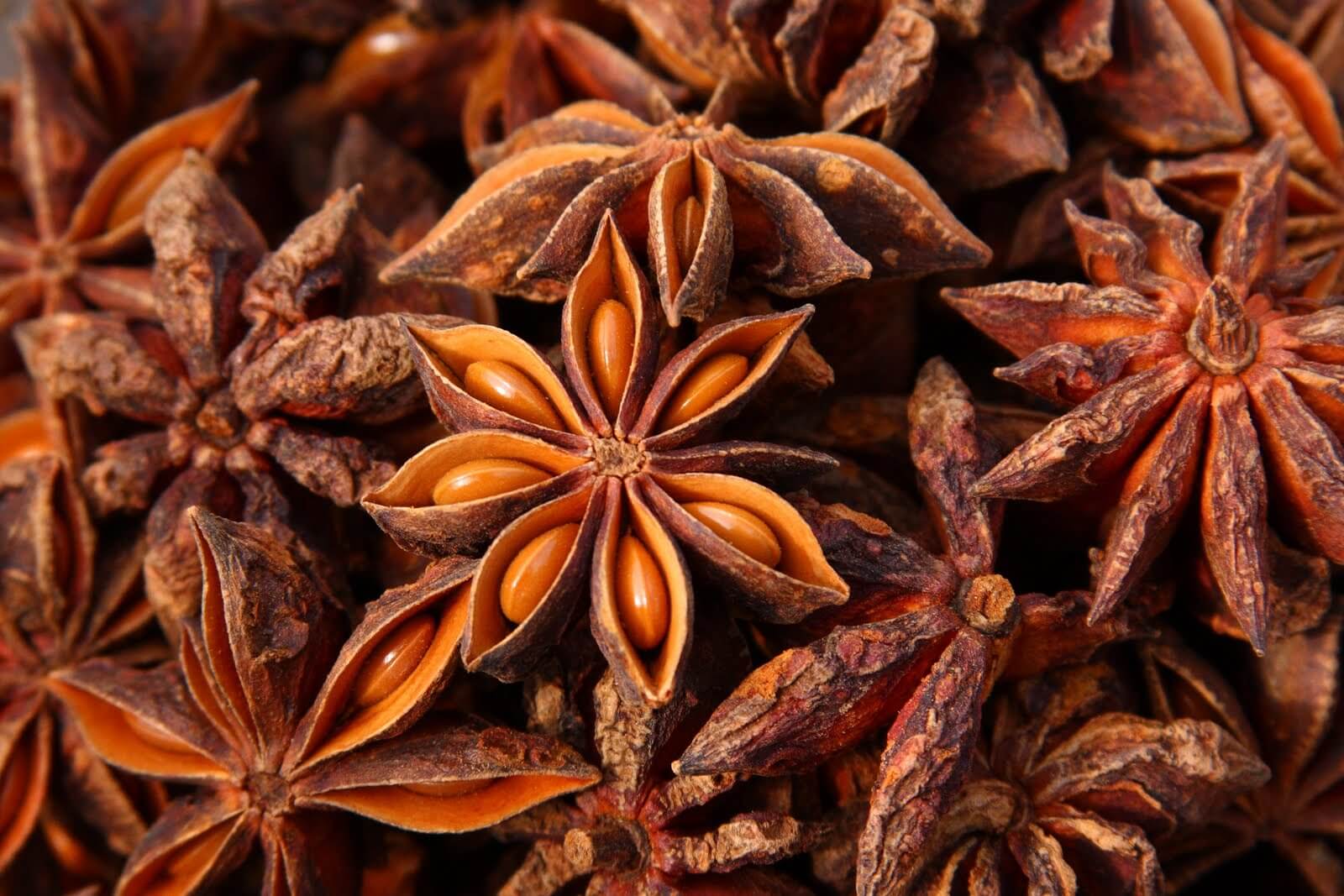Anise is one of the representatives of annual plants belonging to the umbrella family. Since its close relatives are fennel, dill and cumin, it has many similar properties.
In the process of development, the anise forms a straight stem, in height it can reach 70 cm. The plant has a furrowed, rounded shape, in the upper part it forms many branches.
The leaves located at the bottom have jagged, notched, long-petiolate shape... Sometimes their leaves are round-cordate, of which two are located on short petioles, and one more on a longer one. Medium leaves grow on short petioles and are inversely wedge-shaped. The leaves, located in the upper part, consist of lanceolate-linear lobes. They are usually solid or tripartite.
At the flowering stage, anise forms small, dim flowers that grow at the ends of the branches, forming a complex umbrella, reaching 6 cm in diameter. The umbrella itself contains 5-15 simple rays. They may have a single-leaved, filiform cover, in some cases it may be completely absent. As they grow, the petals become white, reaching 1.5 mm in length. They have ciliated edges, apex wrapped inward. Anise is a cross-pollinated plant, flowering from June to July.
At the stage of technical maturity, it forms a fruit of two seeds, resembling an egg. Its usual paint can vary from brown to green-gray. The fruit is 3-4 mm long and 1-2 mm in diameter. Stages the fruit reaches maturity in August... Subsequently, it opens, and two half-fruits appear from it, from which a fragrant, spicy smell emanates. Has a sweetish taste.
The formation of the root system occurs throughout the entire development of the plant, the root itself has a tap, fusiform shape, it can reach 50-60 cm in depth. In common people, anise is known as sweet cumin, bread seed, pigeon anise.
Content
Distribution and cultivation
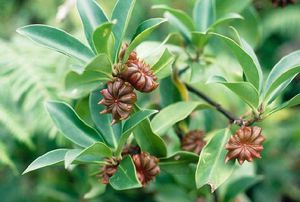 Anise belongs to the group of those rare spices that began to be cultivated many centuries ago. At the same time, until now, scientists have not been able to find out exactly where the birthplace of this plant is. Among the hypotheses, such places are called the Middle East and the Mediterranean. Even in ancient times, people got acquainted with the healing properties of anise ordinary. This information appears in the writings of the ancient Greek doctors Theophrastus, Hippocrates, Dioscorides. Also, there are references to him among the ancient Egyptians.
Anise belongs to the group of those rare spices that began to be cultivated many centuries ago. At the same time, until now, scientists have not been able to find out exactly where the birthplace of this plant is. Among the hypotheses, such places are called the Middle East and the Mediterranean. Even in ancient times, people got acquainted with the healing properties of anise ordinary. This information appears in the writings of the ancient Greek doctors Theophrastus, Hippocrates, Dioscorides. Also, there are references to him among the ancient Egyptians.
In ancient Rome anise seeds have been used as a medicine... They were used as decoration for bedrooms, which by their presence contributed to the creation of an atmosphere of healthy sleep. In this regard, it is appropriate to recall the words of Pliny, according to which anise has a rejuvenating effect and keeps the breath fresh. Often the seeds of this plant were used in the manufacture of special cakes, which improved the digestion process.
Medieval herbariums contain information about the beneficial properties of this plant, which help to cope with many diseases.However, at that time, anise, like most other spices, was a rare plant, therefore it was very expensive. You can understand how valuable this culture was by the fact that it was left on a par with spices such as coriander, cumin and fennel.
Growing anise was a laborious undertaking, since he needed not only highly fertile soil, but also regular watering and a warm microclimate. This culture could bloom only in warm, clear weather. Usually from the moment of sowing the seeds had to wait about 115 daysto get the first fruits. The optimum temperature for seed germination is 3-4 degrees Celsius. Seeds germinate after 16 days.
Today, anise has become widespread in different places of our planet, so it can be found not only in the former USSR, but also in India, European countries, as well as in North Africa, Asia and America.
Procurement, collection and drying of anise
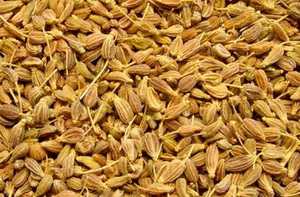 A photo of this culture does not provide complete information about its features. The most valuable for medicinal purposes are the fruits of anise. For their preparation, it is important to choose a favorable moment - usually this is done early in the morning or in the evening, provided that the day is dry and clear. It is necessary constantly monitor the status of umbrellas and at the time of ripening they begin to be cut. A sign that the seeds are ripe is the acquisition of a hard shell and brownish color. After collecting, the umbrellas must be dried, for which they are placed in a well-ventilated area. After that they are threshed.
A photo of this culture does not provide complete information about its features. The most valuable for medicinal purposes are the fruits of anise. For their preparation, it is important to choose a favorable moment - usually this is done early in the morning or in the evening, provided that the day is dry and clear. It is necessary constantly monitor the status of umbrellas and at the time of ripening they begin to be cut. A sign that the seeds are ripe is the acquisition of a hard shell and brownish color. After collecting, the umbrellas must be dried, for which they are placed in a well-ventilated area. After that they are threshed.
The pre-selected planting material must be dried again, and then additionally sieved on a sieve, which will help clear it of debris. The drying process of seeds can be carried out in natural and artificial conditions. In the first case, they are placed in the open air, and in the second, a dryer is used, in which it is necessary to set temperature condition 50-60 degrees Celsius... Seeds remain viable for three years, provided that they are kept in a tightly closed container in a ventilated, dry place.
Quality specimens can be identified by their odorous aroma and light brown color. If the seeds have a dark shade, then, most likely, a lot of time has passed since they were collected, or they were collected at the wrong time.
Useful properties and composition
Properly dried fruits of anise contain up to 6% essential oil, 16-28% fatty oil, and up to 19% protein substances. They also contain sugar and fatty acids - coffee, chlorogenic.
The essential oil is very rich in anethole, the proportion of which can be 90%, the rest of the composition is methyl chavicol. In addition, other substances are present in it: aldehyde, ketone, alcohol, pinene and others. Technology of essential oil production consists in steam distillation of seeds.
Among the positive properties of drugs that can be made from plant seeds, it is worth highlighting the antiseptic, anti-inflammatory, anesthetic, expectorant, stimulating, antispasmodic effect. Also, anise products have a carminative and laxative effect. The use of fruits improves the motor and secretory functions of digestion, also has a positive effect on the function of the glandular apparatus of the bronchi, and helps to reduce spasms in gastric and intestinal colic. An additional positive effect is associated with improved motor function of the uterus and increased secretion of the mammary glands. It is useful to take this plant for frigidity and impotence.
Application
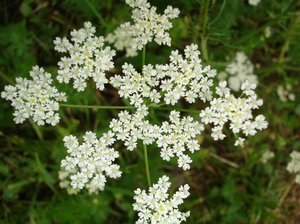 In the writings of ancient writers, you can often find recommendations for chewing the fruits of the anise plant. It has a healing effect on the oral cavity, which makes teeth stronger and more attractiveand also maintains a pleasant odor in the mouth. Also, the fruits of the plant are good for paralysis and epilepsy.When cooked, they are effective for melancholy and bad dreams. Healing tea can be prepared from anise seeds by combining it with caraway seeds and fennel. The positive effect of its use is in strengthening the nervous system.
In the writings of ancient writers, you can often find recommendations for chewing the fruits of the anise plant. It has a healing effect on the oral cavity, which makes teeth stronger and more attractiveand also maintains a pleasant odor in the mouth. Also, the fruits of the plant are good for paralysis and epilepsy.When cooked, they are effective for melancholy and bad dreams. Healing tea can be prepared from anise seeds by combining it with caraway seeds and fennel. The positive effect of its use is in strengthening the nervous system.
- an effective remedy in the fight against burns is an ointment, which is made on the basis of a mixture of ground anise seeds and egg white;
- To help eliminate headaches, neuralgia, and also maintain fresh breath, you can chew anise seeds frequently. It is useful to use plant seeds for men who have impaired potency;
- Many cough candies and inhalation mixtures contain anise essential oil, among other essential ingredients. The presence of a solution of oil in alcohol allows you to effectively destroy lice, ticks and fleas;
- Aniseed oil can help people with bronchitis as it has an expectorant effect. It also stimulates the functioning of the digestive tract and mammary glands. Reception of oil assumes compliance with the following scheme: two or three drops of oil are diluted in one spoonful of warm water, consumed 4 times a day.
Also oil received application in cosmetology: regular application to the skin makes it elastic and youthful, has a positive effect on the overall tone. It is also useful to rinse the eyes with a plant, which allows you to get rid of many ailments of vision. Anise tincture with saffron in wine can help cope with inflammation of the eyes.
Decoction
Anise seed decoction can alleviate a person's condition for various diseases.
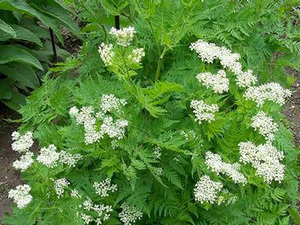 For people who have a weakened libido and have monthly delays, it is useful to take the following decoction: add 4 tablespoons of seeds to one glass of water, put on fire and boil for 5 minutes. After insisting, it must be filtered. Take 2 tablespoons 3 times a day.
For people who have a weakened libido and have monthly delays, it is useful to take the following decoction: add 4 tablespoons of seeds to one glass of water, put on fire and boil for 5 minutes. After insisting, it must be filtered. Take 2 tablespoons 3 times a day.- Also, the broth has a strong diuretic effect. To do this, you need to brew 2 teaspoons of the fruit with a glass of boiled water. Then the mixture is placed in a water bath and kept for half an hour. Strain the cold broth. After that, add one tablespoon of sugar to the broth. Take 2 tablespoons 3-4 times a day before each meal.
- Anise seed decoction is useful as a diaphoretic and expectorant. To do this, take one teaspoon of ground seeds, add 1 glass of water, put on the stove and cook for 20 minutes. Strain the cold broth. Take 1/4 cup 3-4 times a day before each meal.
Infusion
To prepare it, take one teaspoon of the fruit, brew with one glass of boiling water and let it brew for half an hour. Filter cold infusion, take 1/4 cup 3 times a day before every meal.
This remedy is useful for the following diseases:
- diseases of the uterus, discomfort associated with menstruation, and as a means of increasing milk production in nursing mothers;
- as a diuretic, antipyretic and antispasmodic agent;
- for many colds: cough, whooping cough, bronchopneumonia, etc.;
- as a drug that can remove toxic substances from the body.
Conclusion
 For many domestic gardeners, anise appears to be an exotic plant, about the properties of which only a few are aware. Therefore, for many, it still remains an unknown horticultural culture. In fact, this plant is very useful, since even in ancient times it was known about the healing properties of anise. In many ancient writings there are references to this plant, which can help with various diseases and ailments.
For many domestic gardeners, anise appears to be an exotic plant, about the properties of which only a few are aware. Therefore, for many, it still remains an unknown horticultural culture. In fact, this plant is very useful, since even in ancient times it was known about the healing properties of anise. In many ancient writings there are references to this plant, which can help with various diseases and ailments.
And that's not to mention the fact that anise is a fairly common spice. However, regardless of the benefits that this plant can bring, it can only be taken after consulting a specialist. Because even a beneficial plant can be harmful if taken incorrectly.
